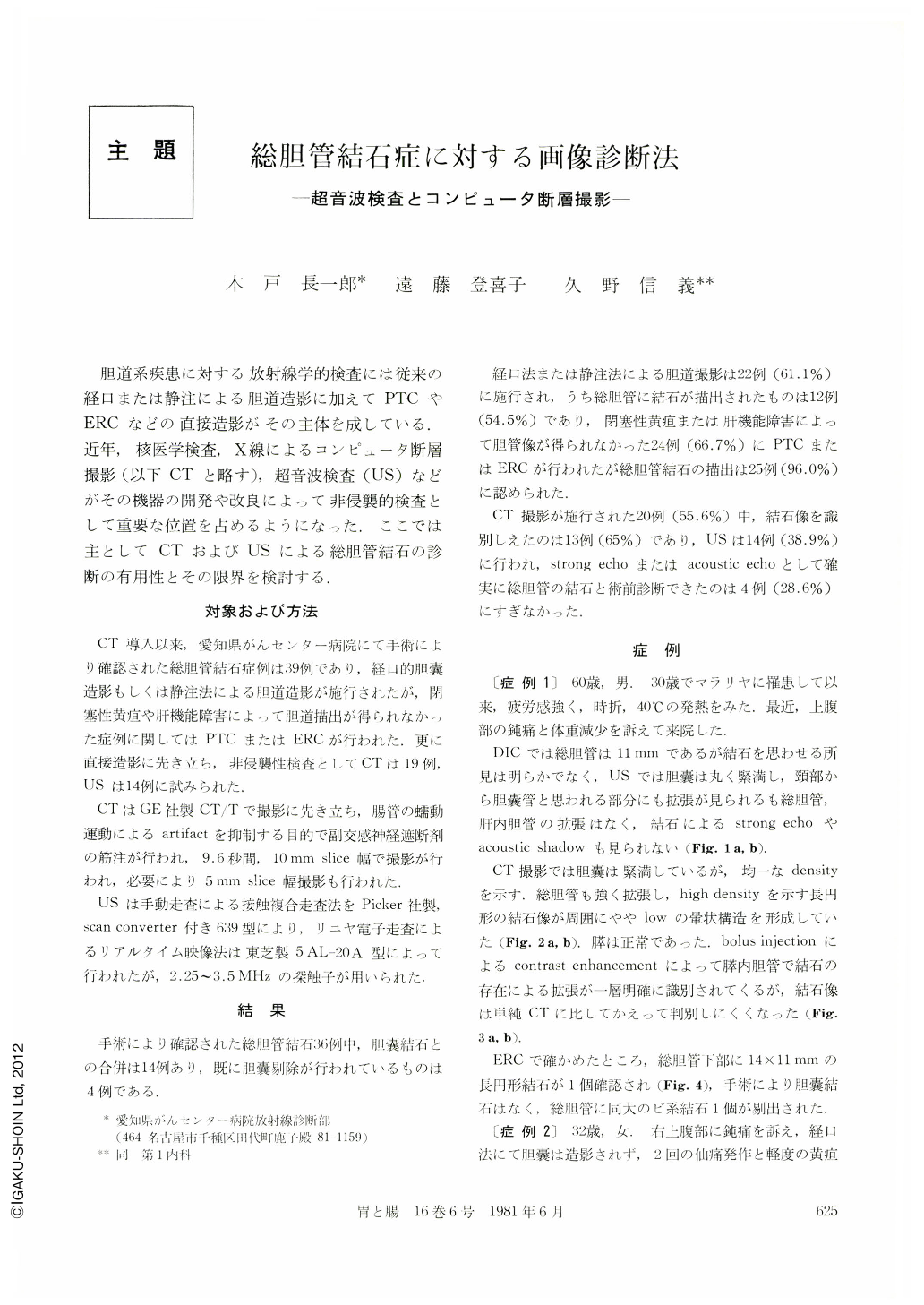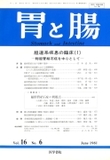Japanese
English
- 有料閲覧
- Abstract 文献概要
- 1ページ目 Look Inside
胆道系疾患に対する放射線学的検査には従来の経口または静注による胆道造影に加えてPTCやERCなどの直接造影がその主体を成している.近年,核医学検査,X線によるコンピュータ断層撮影(以下CTと略す),超音波検査(US)などがその機器の開発や改良によって非侵襲的検査として重要な位置を占めるようになった.ここでは主としてCTおよびUSによる総胆管結石の診断の有用性とその限界を検討する.
There were 38 cases of choledochal stone confirmed by surgery. Of them, seven cases were complicated with cholecystolithiasis and three had undergone cholecystectomy. Oral or intravenous cholangiography performed in 23 cases demonstrated calculi in the common bile duct in 14 cases.
In 25 cases which failed to produce patterns of the bile duct due to obstructive jaundice or disturbance of the liver function, PTC or ERC was performed and choledocholithiasis were found in 24 cases.
As a noninvasive examination, CT was performed in 19 cases and able to show calculi in 13 cases. US (ultrasonic) examination was done in 14 cases, but calculi were confirmed in only three cases.
CT being superior in the resolving power can demonstrate calculi if there is a small content of calcium. But it cannot determine the number and size of calculi for sure because of its being inferior in the spaceresolving power. With contrast enhancement, moreover, findings of the dilated bile duct are made clearer but the presence of calculi becomes less distinct.
However, CT is effective in detecting the presence of secondary lesions and finding out the relationship with surrounding organs and location of calculi. Also it is capable of providing a three dimensional indication. Its visualizing capacity is not restricted anatomically.
On the other hand, US can confirm the presence of a calculus by making use of the strong echo and acoustic shadow of the calculus. However, it is restricted considerably by varied direction of scanning in the extrahepatic bile duct and its usefulness is not rated highly as in cholecystolithiasis. Because of restrictions inherent in it such as operative wound, drainage wound, gas of intestinal tract, and corpulence, US may be said to be considerably inferior to CT and other methods of direct contrast radiography.

Copyright © 1981, Igaku-Shoin Ltd. All rights reserved.


